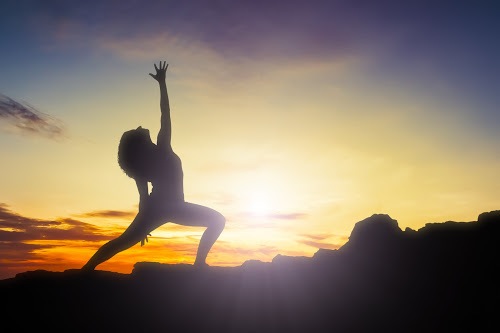
Perhaps a novice’s biggest challenge in establishing a yoga practice is choosing amongst the overwhelming number of approaches to its physical postures—Iyengar, Hatha, Vinyasa, Power, Ashtanga or another of the seemingly endless yogic varieties.
A first world problem to be sure. In fact, when we look to yoga’s origins for guidance, we discover that, ironically, the idea of a physical yoga practice as we know it started with one solitary asana—samastiti or simple seated pose.
When tracing the word asana back to Patanjali’s sutras, which originated in 200 BCE, we find it refers specifically to the seated position designed for meditation. This particular asana was practiced repeatedly as a way of extending the time one could spend seated in meditation.
This is important because it shows us that asana were designed as a means rather than an end. That knowledge alone can help assuage our obsession with finding the right style of yoga and achieving picture-perfect postures.
Asana has expanded exponentially over the past 2,000 years.
Today you are just as likely to find yoga practitioners standing, lying or upside down as you are to find them seated.
So, why so many different poses and styles?
If one seated position was good enough for Patanjali and his fellow practitioners, why not just sit around, breathing and chanting?
Well, in a nutshell, life was simpler then. More active yoga has taken hold in the West because it harnesses our abundance of yang energy, gently guiding it, stretching it (and us), while leading us to a place where, finally, at the end of class, we are able to lie down in savasana (corpse pose) and give ourselves permission to just be there in stillness for a few minutes.
This is not a treat we earn for having made it through the more rigorous poses—it is, indeed, the point of those rigorous poses.
As the quantity of asana have increased, our approach to them has become, necessarily, diffused. We don’t go as deep, stay as mindfully present or learn as much from each individual asana because there is always another pose awaiting our attention. We can begin to approach our asanas differently, perhaps more like our yogic forbearers, if we focus on the experience rather than the destination of each asana.
Adjusting the intention behind an asana can transform us from posers chasing perfect form to yogis seeking inner truth.
This journey may require backing off and relearning postures you thought you’d mastered. It will definitely require listening—and heeding—the wisdom your body speaks when you practice.
Don’t be afraid to modify, prop or try things differently as you focus on the kind of alignment that comes only when we’ve let the outcome stop driving the pose.
It may help to think about some of the specific fruits of yoga that are produced via the physical expression of certain styles of asana practice.
A yoga practice takes on a whole new dimension when other, more philosophical limbs of yoga are studied and applied to the asana. Through the lens of the yama, asana become less like physical exercises and more like life lessons.
Consider contemplating how to look for the truth in our poses, rather than trying to make them look right (satya). Or working on not coveting that perfectly executed pose on the mat next to us (asteya).
Take the focus off of the desires that show up, even on our mats, in the form of rumbling stomachs or overactive libidos (bramacharya). Maintain a posture of non-possessiveness or exclusivity as we devote our practice to the divine, remembering that we don’t own the concept or understand it any better than those with different belief systems (aparigraha).
The niyama them follow seamlessly—almost as an offshoot of practice—as our intention of becomes more pure (shaucha). Contentment (santosha) soaks into our practice because we are no longer coveting what is not ours.
We know we already have what we need (tapas), and we are open to the lessons that will penetrate deeply (svadhyaya) as we surrender to the divinity guiding our practice (ishvarapranidhana).
Simply by approaching practice in that way, we can embody yogic philosophy which may have previously seemed bafflingly exotic, beyond our reach, or out of our comfort zone.
Just by bringing the asana into perspective as a part—rather than the totality—of our yoga practice, we are primed to become students of life who use their yoga mats as a classroom of the soul, not a workout room.
Part of a series.
Read Part 1, here.
Love elephant and want to go steady?
Sign up for our (curated) daily and weekly newsletters!
Apprentice Editor: Amani Omejer / Editor: Travis May
Photo: Markus Gann/Pixoto


 Share on bsky
Share on bsky




Read 1 comment and reply